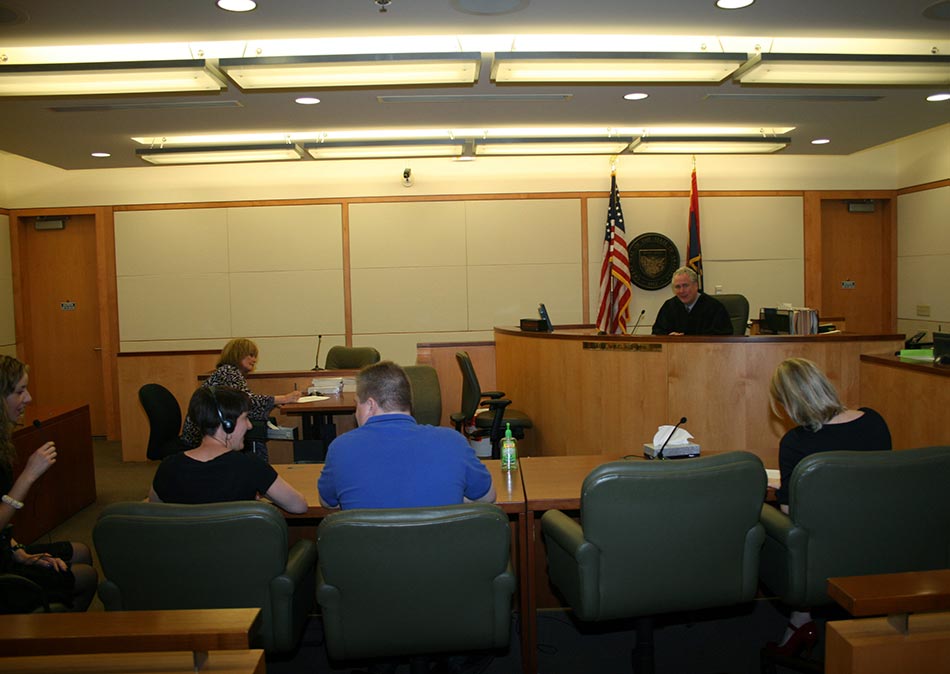IN THIS PHOTO: From left to right closer row - Mayela T., Translator; Parents; You would sit in the empty seat between the Deputy Public Defender and a parent or guardian; Katherine S., Deputy Public Defender. From left to right further row - Kim H., Court Reporter; Judge Samuel Thumma
The Decision
At the end of each hearing, I will decide whether the juvenile should be released or detained (locked up). A juvenile can be detained for a variety of reasons, including where there is reason to believe that the juvenile will not attend the next hearing if released; where there is reason to believe that the juvenile is likely to injure someone if released or that the interests of the juvenile or the public require that the juvenile be detained.
If the juvenile is released, I will set conditions of release in a document called a Release Order. If released, a juvenile generally will be released to an adult listed by name (typically a parent) and ordered to not break any laws and not leave Arizona without the permission of the Juvenile Probation Officer. I also can include many other conditions of release, including no contact with the victim; no contact with other named individuals; to attend school every day; to seek or maintain employment; to be fingerprinted; to provide samples for drug or DNA testing; to participate in a psychological evaluation or counseling and many other requirements. The release order also can put a juvenile on home arrest (which allows the juvenile to do things like go to school and drug test and otherwise to remain at home at all times, with an ankle bracelet that literally tracks the juvenile's every move). Home arrest is the most restrictive form of release short of detaining a juvenile. I also tell the juvenile that if the juvenile violates any terms of my Release Order, the juvenile could be detained in advance of the next court hearing.

